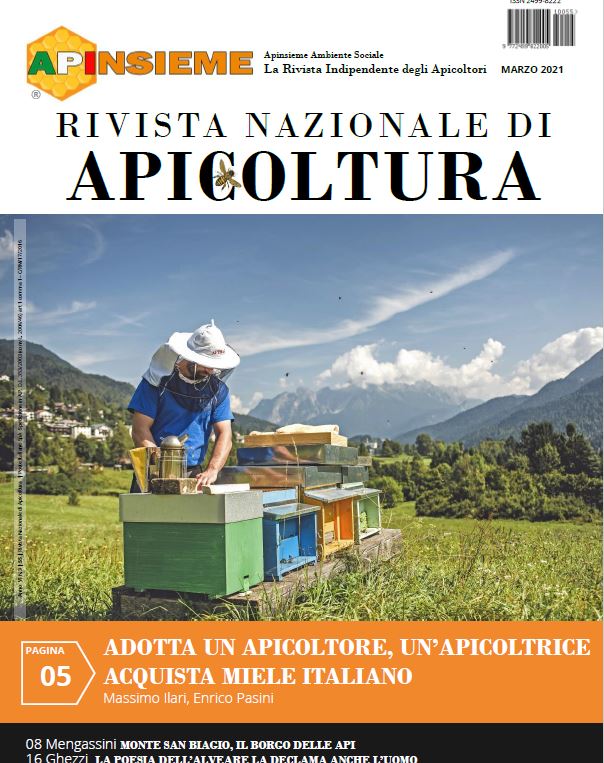
RIVISTA NAZIONALE DI APICOLTURA "The Poetry of the Hive"
Share
We are in the RIVISTA NAZIONALE DI
BEEKEEPING here I present a translated fragment of the article:
THE POETRY OF THE BEEHIVE ALSO DECLARES MAN
The Apibarricas hives, and the relationship with them, by Oscar Valencia: healthy sharing between bees and humans. And again... this period is the time for brief, quick visits. The goal is to keep the hive open for as little time as possible; prolonged cooling of the brood could actually have harmful effects on the family's well-being. Let's see how to proceed.
I am a person who still believes that poetry is just what you find written in books with a pretty title at the top of the page. Others, on the other hand, believe that poetry can only be written by poets, and others are still convinced that it can only be born from the noble soul of a great thinker.
Reality, on the other hand, isn't like that because poetry is within each of us and is simply the different and deeper way we can look at things. There are people who have never written a poem, perhaps who don't even know how to write, but who manage to create poetry because poetry is their way of life.
Poetry is like a strange lady, quite unpredictable, who can be born and appear in the most impossible and unthinkable places. She can be born behind a hedge or next to a row of cypress trees leading to a mountainous hill, just as she can simply bloom on a suburban street—one of those ugly streets that look dirty even when they're clean, that look wet even when they're dry.
In this way I believe that even beekeepers, if we would look at and care for our bees in a polite, loving, caring, and kind way, could bring to life a wonderful poem.
It is precisely in this sense that I want to tell you the story of the friendly beekeeper Oscar Valencia, who decided to treat his bees with great passion and precious love, trying to give them the best living conditions and the greatest chances of survival, thus writing, in my opinion, a true page of splendid beekeeping poetry.

Oscar, concerned about the current decline of bees, has designed a unique, alternative habitat to the traditional hives on the market, in which to raise his bees, with the conviction of protecting and preserving this precious pollinating insect in the best possible way.
After several attempts, he decided to transform wine barrels into a beehive, trying to create a place as similar as possible to what bees seek in nature. He therefore began by narrowing the hive entrance to ensure the bees could more effectively defend their nest from predators. Each "hive barrel" is placed on a four-legged stand, each of which holds a small container filled with water, preventing ants and other insects from climbing into the nest.
At the bottom of the barrel is the chamber for breeding, and at the top is a second chamber that serves as a super, from which the beekeeper can extract honey for sale.
Oscar says: “This hive was not designed to carry out massive honey extraction, as occurs in modern rational beekeeping, but rather to support a principle of healthy sharing between bee and man designed to protect the conservation, protection, and safeguarding of this precious insect that is in serious danger of extinction.”
This original hive model was also designed to fully respect the value and importance of the bee in helping to maintain and conserve the biodiversity of the environment in which we live. Under the roof of this unique hive, there is a first layer of honeycomb placed on top and a second located about 20 cm below. Between the two wire layers, there is a space that becomes an air chamber designed to protect the colony from the heat in summer and the cold in winter. Immediately below the lower lid are the super frames, beneath which is a queen excluder that must never be removed because everything in the brood chamber should never be touched.
Inside the barrel, panels have been placed that transform the cylindrical cavity into a parallelepiped, but at the same time create another air chamber between the outer wall of the barrel and the nest. The latter serves to protect the hives, ensuring a better and constant thermal homeostasis within the nest. At the rear of the "hive barrel," there is an opening that connects the external environment with the lower part of the nest. Through a system of tubes, a feeder can be placed to administer both liquid and solid feed. During periods when supplemental feeding is not necessary, this opening is closed with a fine mesh, allowing good ventilation within the hive.
You can download the file at the following link:
